Ozan K. Tonguz
The Distribution Shift Problem in Transportation Networks using Reinforcement Learning and AI
Sep 18, 2025Abstract:The use of Machine Learning (ML) and Artificial Intelligence (AI) in smart transportation networks has increased significantly in the last few years. Among these ML and AI approaches, Reinforcement Learning (RL) has been shown to be a very promising approach by several authors. However, a problem with using Reinforcement Learning in Traffic Signal Control is the reliability of the trained RL agents due to the dynamically changing distribution of the input data with respect to the distribution of the data used for training. This presents a major challenge and a reliability problem for the trained network of AI agents and could have very undesirable and even detrimental consequences if a suitable solution is not found. Several researchers have tried to address this problem using different approaches. In particular, Meta Reinforcement Learning (Meta RL) promises to be an effective solution. In this paper, we evaluate and analyze a state-of-the-art Meta RL approach called MetaLight and show that, while under certain conditions MetaLight can indeed lead to reasonably good results, under some other conditions it might not perform well (with errors of up to 22%), suggesting that Meta RL schemes are often not robust enough and can even pose major reliability problems.
Toward a Low-Cost Perception System in Autonomous Vehicles: A Spectrum Learning Approach
Feb 04, 2025



Abstract:We present a cost-effective new approach for generating denser depth maps for Autonomous Driving (AD) and Autonomous Vehicles (AVs) by integrating the images obtained from deep neural network (DNN) 4D radar detectors with conventional camera RGB images. Our approach introduces a novel pixel positional encoding algorithm inspired by Bartlett's spatial spectrum estimation technique. This algorithm transforms both radar depth maps and RGB images into a unified pixel image subspace called the Spatial Spectrum, facilitating effective learning based on their similarities and differences. Our method effectively leverages high-resolution camera images to train radar depth map generative models, addressing the limitations of conventional radar detectors in complex vehicular environments, thus sharpening the radar output. We develop spectrum estimation algorithms tailored for radar depth maps and RGB images, a comprehensive training framework for data-driven generative models, and a camera-radar deployment scheme for AV operation. Our results demonstrate that our approach also outperforms the state-of-the-art (SOTA) by 27.95% in terms of Unidirectional Chamfer Distance (UCD).
Using AI for Mitigating the Impact of Network Delay in Cloud-based Intelligent Traffic Signal Control
Mar 06, 2020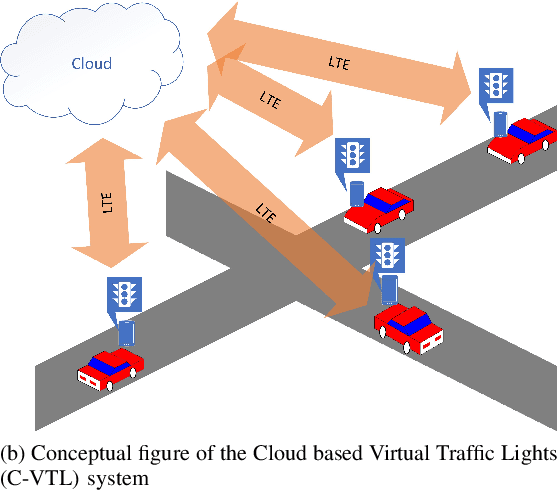
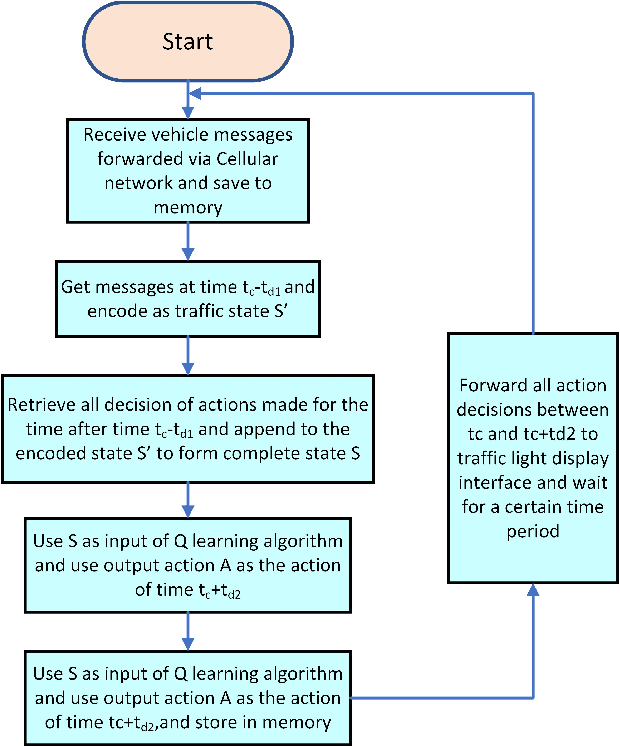
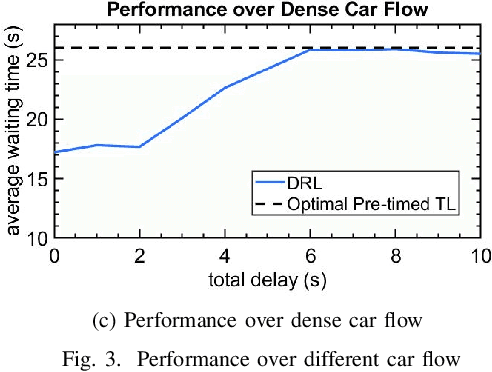
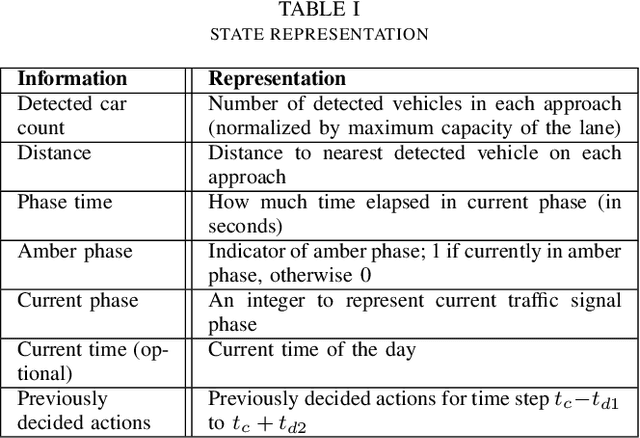
Abstract:The recent advancements in cloud services, Internet of Things (IoT) and Cellular networks have made cloud computing an attractive option for intelligent traffic signal control (ITSC). Such a method significantly reduces the cost of cables, installation, number of devices used, and maintenance. ITSC systems based on cloud computing lower the cost of the ITSC systems and make it possible to scale the system by utilizing the existing powerful cloud platforms. While such systems have significant potential, one of the critical problems that should be addressed is the network delay. It is well known that network delay in message propagation is hard to prevent, which could potentially degrade the performance of the system or even create safety issues for vehicles at intersections. In this paper, we introduce a new traffic signal control algorithm based on reinforcement learning, which performs well even under severe network delay. The framework introduced in this paper can be helpful for all agent-based systems using remote computing resources where network delay could be a critical concern. Extensive simulation results obtained for different scenarios show the viability of the designed algorithm to cope with network delay.
Partially Detected Intelligent Traffic Signal Control: Environmental Adaptation
Oct 23, 2019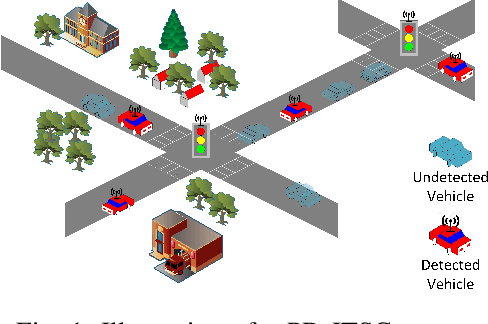
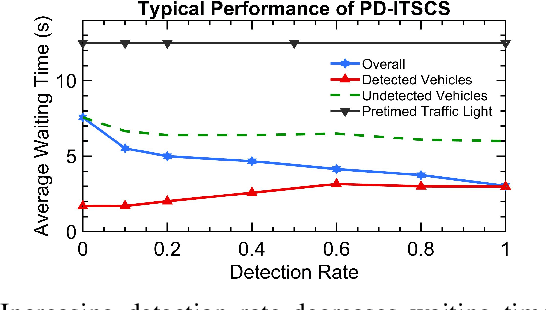
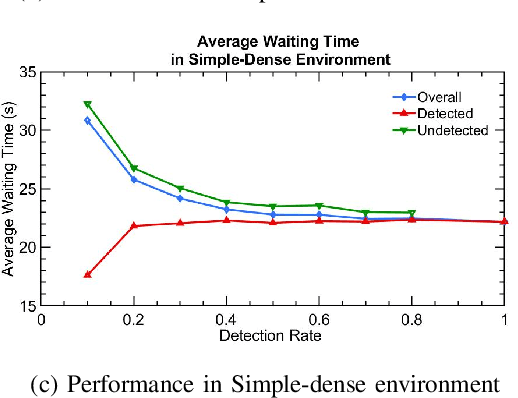
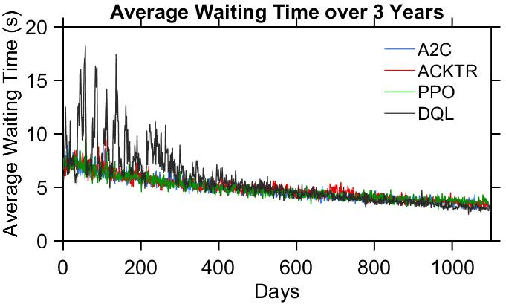
Abstract:Partially Detected Intelligent Traffic Signal Control (PD-ITSC) systems that can optimize traffic signals based on limited detected information could be a cost-efficient solution for mitigating traffic congestion in the future. In this paper, we focus on a particular problem in PD-ITSC - adaptation to changing environments. To this end, we investigate different reinforcement learning algorithms, including Q-learning, Proximal Policy Optimization (PPO), Advantage Actor-Critic (A2C), and Actor-Critic with Kronecker-Factored Trust Region (ACKTR). Our findings suggest that RL algorithms can find optimal strategies under partial vehicle detection; however, policy-based algorithms can adapt to changing environments more efficiently than value-based algorithms. We use these findings to draw conclusions about the value of different models for PD-ITSC systems.
 Add to Chrome
Add to Chrome Add to Firefox
Add to Firefox Add to Edge
Add to Edge